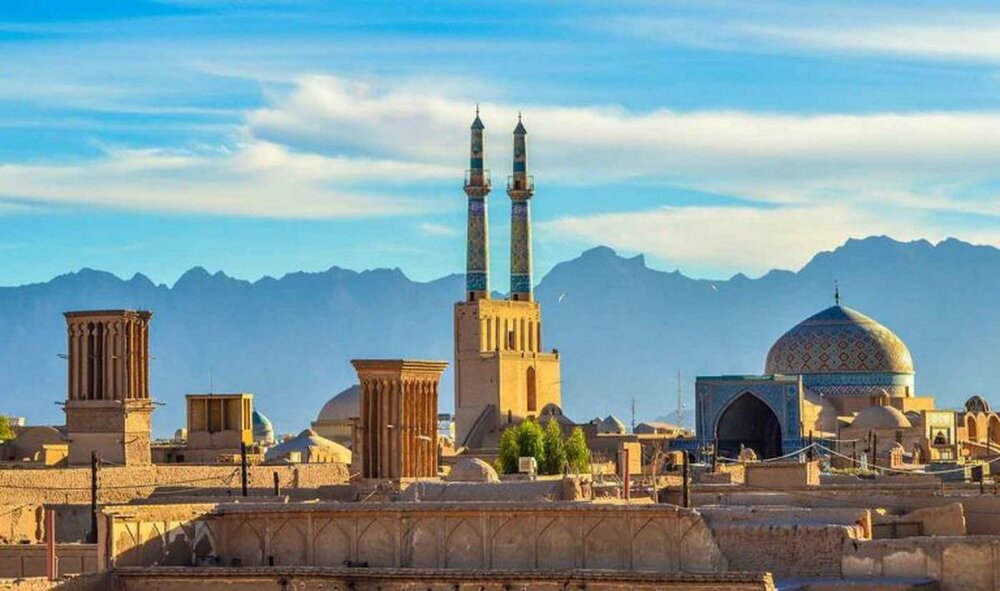Route unveiled to lead sightseers to Yazd’s beating heart

TEHRAN – On Monday, tourism authorities of Yazd, which its historical core gains UNESCO status, unveiled a new route to lead sightseers to the beating heart of the Iranian oasis city.
The ceremony was attended by a host of provincial and local officials, academics, university students, tour operators, and other travel insiders, CHTN reported.
“Diversification of Yazd’s tourism programs will have a significant impact on the duration of travelers’ stay here,” Yazd province’s tourism chief said, addressing the unveiling ceremony.
“This goal can be achieved through the creation of new tourism routes,” Ahmad Akhoundi added.
Currently, tourism itineraries in Yazd can be divided into three main categories; the historical core of the ancient city, ancient water management facilities and sites, and Zoroastrians’ cultural sites, the official explained.
“In this regard, several tourism routes have been defined so far, and today, we are witnessing a new one aimed to highlight the arts and culture of this ancient city,” said Mohsen Abbasi who presides over the World Heritage site.
In July 2017, the historical structure of the city of Yazd was named a UNESCO World Heritage. Wedged between the northern Dasht-e Kavir and the southern Dasht-e Lut on a flat plain, the oasis city enjoys a very harmonious public-religious architecture that dates from different eras.
Yazd is usually referred to as a delightful place to stay, or a “don't miss” destination by almost all of its visitors. The city is full of mudbrick houses that are equipped with innovative badgirs (wind catchers), atmospheric alleyways, and many Islamic and Iranian monuments that shape its eye-catching city landscape.
Experts believe that Yazd is a living testimony to the intelligent use of limited available resources in the desert for survival. Water is brought to the city by the qanat system. Each district of the city is built on a qanat and has a communal center.
Furthermore, the use of earth in buildings includes walls and roofs by the construction of vaults and domes. Houses are built with courtyards below ground level, serving underground areas. Wind-catchers, courtyards, and thick earthen walls create a pleasant microclimate.
Partially covered alleyways together with streets, public squares and courtyards contribute to a pleasant urban quality. The city escaped the modernization trends that destroyed many traditional earthen cities.
It survives today with its traditional districts, traditional houses, bazaars, hammams, water cisterns, mosques, synagogues, Zoroastrian temples, and the historic garden of Dolat-Abad. The city enjoys the peaceful coexistence of three religions: Islam, Judaism, and Zoroastrianism.
Additionally, Yazd is home to numerous qanats which have supplied water to agricultural and permanent settlements for thousands of years. The man-carved underground qanat system, in fact, relies on snow-fed streams flowing down the foothills of surrounding mountains.
Yazd’s earliest water supply construction is estimated to date from the Sassanid era (224 to 651 CE). However, many others have been continually repaired and used over time, and most surviving Ab-Anbars (traditional mudbrick cisterns) can be today traced to the late Safavid and Qajar periods.
In the realm of ancient water management, Yazd Water Museum is a top destination devoted to the brave men who built such underground aqueducts in the past. Located in a restored mansion with a visible qanat running underneath, the museum offers its visitors a fascinating glimpse into the hidden world of qanats through a series of photographs, exhibits, and architectural drawings.
The museum charts nearly 2000 years of unique irrigation structure that has been in operation, yet describes the drilling of mother wells and associated underground water networks stretched to the ancient city.
The concept of Persian Qanat was registered on the UNESCO World Heritage list in 2016. According to the UN cultural organization, the qanats provide exceptional testimony to cultural traditions and civilizations in desert areas with an arid climate.
AFM
